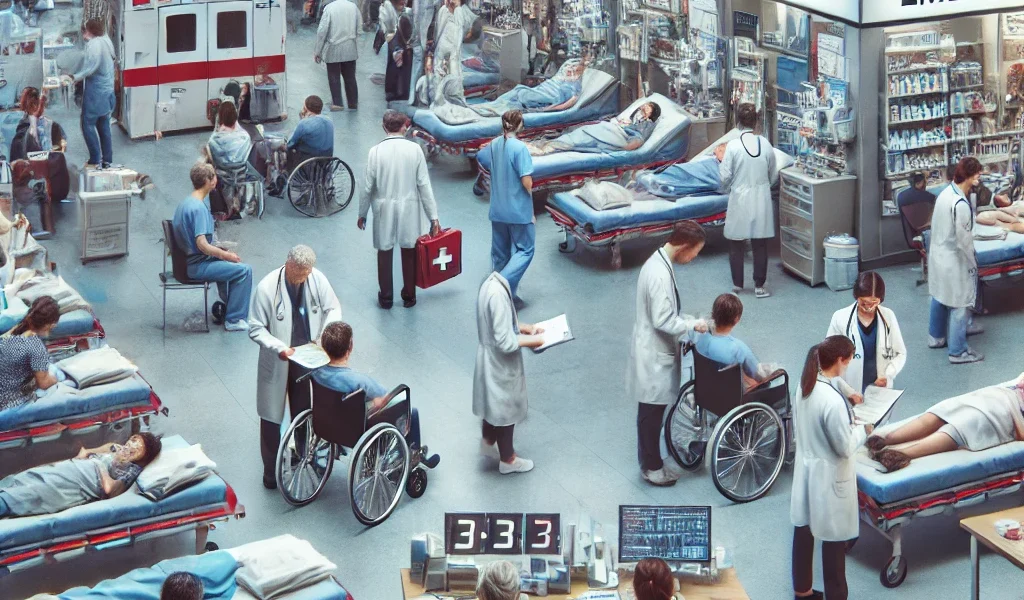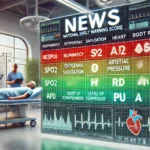ERTriage system is essential in healthcare, sorting patients by the severity of their conditions and urgency of needs. This process is particularly crucial in emergency settings, where quick assessments can greatly influence outcomes. Effective triage can significantly reduce patient mortality rates, length of hospital stays, and improve overall health and satisfaction.
1. Resource Allocation
An effective ERTriage system enhances resource allocation in healthcare facilities. In emergency departments (EDs), limited resources like staff, equipment, and space necessitate prioritization. For instance, a heart attack patient is treated before someone with a minor fracture. This timely intervention is critical and can save lives. Studies indicate that hospitals with structured triage protocols experience lower mortality rates among critically ill patients, underscoring the importance of efficient resource management in emergency care.
2. Reducing Wait Times with ERTriage
Effective ERTriage significantly reduces patient wait times by prioritizing care based on urgency. Patients with severe pain or respiratory distress are seen immediately, while those with non-urgent issues may be directed to outpatient care or follow-up visits. This approach streamlines the treatment process and enhances the efficiency of emergency departments. Shorter wait times alleviate stress and anxiety, creating a more positive experience for patients and their families.
Clinical Decision-Making
ERTriage system also enhances clinical decision-making. A clear understanding of patient priorities enables healthcare professionals to make informed treatment choices. Triage protocols often include standardized guidelines for symptom assessment and intervention determination. This structure reduces ambiguity and supports timely, effective care. Consequently, accurate diagnoses and tailored treatments become more achievable, leading to improved health outcomes.
4. Hospitalization Rates
Effective triage can also contribute to reduced hospitalization rates. By ensuring that patients receive appropriate care in a timely manner, healthcare providers can prevent unnecessary admissions to the hospital. For example, patients whose conditions are determined to be non-urgent can be treated on an outpatient basis or referred to specialists for further evaluation. This proactive approach not only enhances individual patient care but also alleviates overcrowding in emergency departments. With fewer patients occupying hospital beds for minor issues, healthcare facilities can allocate their resources more effectively, ultimately leading to better overall patient outcomes.
5. Patient Safety
Patient safety is a paramount concern in healthcare, and triage plays a significant role in enhancing safety protocols. ERTriage process often involves continuous monitoring and reassessment of patients as their conditions change. This vigilant approach allows healthcare providers to identify any deterioration in a patient’s status and respond promptly. For example, a patient initially assessed as stable may later exhibit signs of complications that require immediate intervention. By facilitating timely action, triage enhances patient safety and reduces the likelihood of adverse events, such as missed diagnoses or delayed treatments.
6. Patient Satisfaction and Experience
The impact of triage extends beyond clinical outcomes; it significantly influences patient satisfaction and overall experience within the healthcare system. When patients feel that their needs are being prioritized and addressed promptly, their perception of the healthcare system improves. Positive experiences in emergency settings foster trust in healthcare providers, encouraging patients to seek care when needed and adhere to treatment plans. This trust is especially important for vulnerable populations who may be hesitant to access medical services due to past negative experiences or fears of inadequate care.
7. Specialized ERTriage Systems
In specialized medical settings, such as trauma centers or pediatric emergency departments, the impact of triage on patient outcomes can be even more pronounced. For instance, trauma triage systems prioritize patients based on the severity of their injuries and the mechanism of trauma, allowing for targeted interventions that significantly improve survival rates. In pediatric emergency departments, triage protocols are designed to meet the unique needs of children, ensuring that they receive age-appropriate care that considers their developmental stage. These specialized approaches to triage underscore the importance of tailoring systems to meet the specific needs of various patient populations.
8. Challenges and Considerations of ERTriage
Despite its benefits, the implementation of effective triage systems is not without challenges. One of the most pressing issues is the variability in triage protocols across different healthcare settings. Inconsistencies in training and adherence to protocols can lead to discrepancies in patient assessment and care. Additionally, the rapid pace of emergency medicine can sometimes result in rushed assessments, which may compromise the accuracy of triage decisions.
Moreover, the increasing volume of patients seeking emergency care can strain triage systems, making it essential for healthcare facilities to regularly evaluate and update their protocols. Continuous training and quality assurance measures are vital for maintaining the effectiveness of triage systems and ensuring that all healthcare providers are equipped to deliver optimal patient care.
Closing thoughts
The impact of ERTriage on patient outcomes is multifaceted, influencing resource allocation, wait times, clinical decision-making, hospitalization rates, patient safety, and overall satisfaction. By systematically prioritizing patients based on their medical needs, healthcare facilities can enhance the quality of care provided in emergency settings. As the healthcare landscape continues to evolve, refining triage protocols and incorporating best practices will be essential in optimizing patient outcomes and ensuring the sustainability of healthcare systems. Ultimately, effective triage is not just about managing patient flow; it is about ensuring that every patient receives the timely and appropriate care they need to achieve the best possible health outcomes.
For further insights and detailed strategies, we invite you to explore the article Triage Strategies for Emergency Departments.



